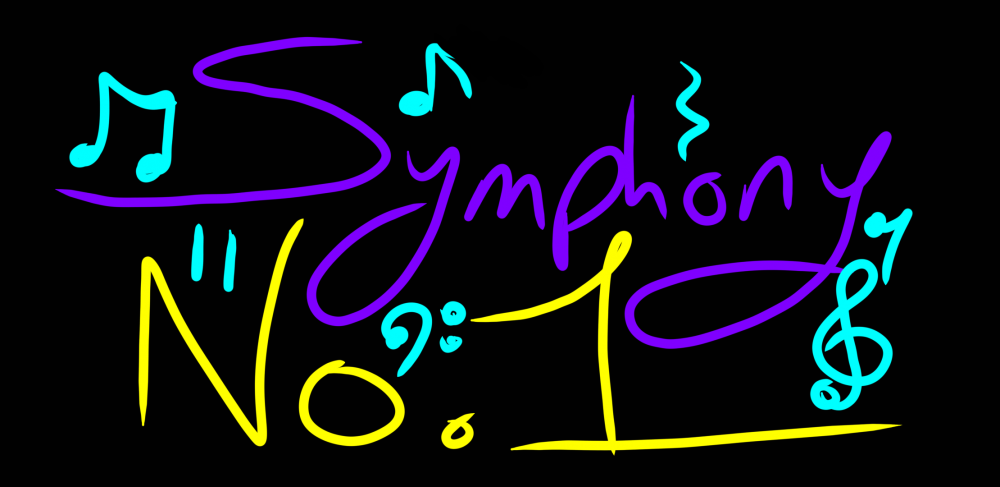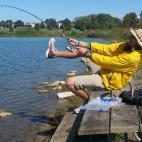Search the Community
Showing results for tags 'celesta'.
-
This is my 2nd soliloquy for celesta. I have used the instrument in another piece by itself and as part of a duet in another series of pieces.
-
This piece is made up mostly of old material that I came up with 5+ years ago but never did anything with. I have worked on this since mid-April. The title... I guess I probably shouldn't have called this a symphony, but I did anyway. This is an ode to college. For the past three years, I have attended Harrisburg Area Community College, majoring in Computer Networking Technology. I have had ups and downs, including countless moments of uncertainty and procrastination. I recall thinking several times, "Should I change my major?" and "Am I wasting my time?" In fact, right up until the end, I wasn't even sure if I was going to graduate at all. But I did. And so, this piece is intended to reflect my college experience. This piece is organized in a similar way to my other two "symphonies," and has the same instruments with the addition of a drumset. This piece was created in Musescore 2 using the Compifont Soundfont and the GeneralUser Soundfont. It lasts almost a half hour. The first movement is exuberant and jazzy. The second movement is panicky, uncertain, and contemplative. The third movement is recuperative and celebratory; it is also mostly the first movement backwards.
- 3 replies
-
- acoustic bass
- jazz guitar
- (and 9 more)
-
I decided to post this as incomplete, because this only the first movement of hopefully three that will make up my second symphony. If this is incorrect, please feel free to move this to the proper location. The instruments are the same as my first symphony: Vibraphone, Marimba, Crash Cymbals, Cabasa, Piano, Celesta, String Synthesizer, Jazz Guitar, and Acoustic Bass. I placed emphasis on establishing a melody and then having it reappear later. The movement lasts about 5 minutes, and was written in Musescore 2 using the Compifont soundfont. Like my first one, in the mp3, there are popping sounds that I believe are caused by an issue with Musescore and the guitars. The movement starts off slow, and then becomes more upbeat as it goes on.
- 2 replies
-
- movement i
- vibraphone
- (and 9 more)
-
So I started writing a third symphony, with the same instrumentation as the previous two. I remembered that I have a lot of unused material that I wrote years ago. Some of it is probably 5 years old or older at this point. I took two things that I wrote, and put them together to create what is intended to be the intro to Movement I. The originals, "composition" and "Symphony," are included below for reference (I imported the original MIDIs, and Musescore messed up the triplets). I took them and tried to improve upon them, including taking them out of the full orchestra zone and condensing them into the chamber orchestration. I wasn't comfortable with the full orchestra back then and I certainly am not now. Overall, the only thing I can say so far about it is that it is very repetitive. I guess that's just part of my style.
- 3 replies
-
- 1
-

-
- jazz guitar
- vibraphone
- (and 8 more)
-
I had more ideas, so I put them together and created a second symphony. The instruments are the same as my first symphony: Vibraphone, Marimba, Crash Cymbals, Cabasa, Piano, Celesta, String Synthesizer, Jazz Guitar, and Acoustic Bass. I placed emphasis on establishing a melody and then having it reappear later. The piece lasts about 20 minutes, double the length of my first symphony, and was written in Musescore 2 using the Compifont soundfont. I worked on it for about a week and a half. Like my first one, the entire piece is of original composition, unless I somehow copied existing melodies without realizing it. Also like my first one, in the mp3, there are popping sounds that I believe are caused by an issue with Musescore and the guitars. The first movement starts off slow, and then becomes more upbeat as it goes on. The second movement is austere and jazzy. The third movement, like my first symphony, is pretty much the first movement backwards with a few changes and additions here and there. This symphony serves as a sister to my first symphony, but it tells a different story. I feel like it also turned out sounding like the soundtrack to a video game. Indeed, there are parts inspired by the music of the Mario Golf series (especially Advance Tour), composed by Motoi Sakuraba. Other parts are made up of musical ideas that I've actually had for years. For example, the sixteenth notes in the first movement at measure 49 were inspired by a musical idea that I came up with more than ten years ago. I was at an amusement park we have here in Pennsylvania called Hersheypark, and I was in line to ride the ferris wheel. The ferris wheel machinery had this sort of hum to it that sounded to me like the notes C and G, and it stuck with me all these years later until I finally used it in a musical piece. In the end, I decided to kind of have fun with the instrumentation, and not really pay attention to whether or not it could be performed by a real orchestra.
- 2 replies
-
- jazz guitar
- vibraphone
- (and 8 more)
-
True to the title, this is the first time I have really attempted to make a symphony. I'm not sure if it really is a symphony; if it is, it's a highly unusual one, but it does have about three movements including a scherzo. The instruments are, in no particular order (I didn't think to put them in concert order): Marimba, Acoustic Bass, Piano, Jazz Guitar, Vibraphone, Celesta, Strings, Cabasa, and Crash Cymbals. The piece lasts about 9 minutes and 40 seconds, and was written in Musescore 2 using the Compifont soundfont. I worked on it on and off for the past 2 weeks. The entire piece is of original composition, unless I somehow copied existing melodies without realizing it. In the mp3, there are popping sounds that I believe are caused by an issue with Musescore and the guitars. The first movement is on the slow side, and transitions into the second movement which is the scherzo. The scherzo ends without transitioning into the third movement. The third movement is more or less the first movement, but in reverse. I didn't know how I wanted the third movement to go, but I did know I wanted to see how everything sounded in reverse. I went to a website that reverses midi files. The website kind of messed up some of the lengths of the notes, but that sounded interesting to me. I took what sounded the best, added some more things, and made the third movement. I also drew a little logo on my phone to go along with it, since I also posted the piece on YouTube. https://www.youtube.com/watch?v=5cCfkm8Jsf0
- 4 replies
-
- crash cymbals
- marimba
-
(and 8 more)
Tagged with:
-
I have no music sheet for this one. I can make one but it might take a while. It was written for a computer game so its quite repetitive. Hope you'll still enjoy it :) Please listen and give your feedback.
- 10 replies
-
- 2
-

-
- celesta
- soundtrack
-
(and 2 more)
Tagged with:
-
Again, I was not sure whether this qualifies for the chamber music or the large ensemble category, but here it is. Powder Peony Waltz is a Viennese waltz written for whatever group of instruments I like (modified orchestral ensemble with ornaments in the form of a piano and celesta). I know that the transition between different keys is extremely awkward and chord progressions are not very fancy, but I was simply asked to write a quick small piece for dance class at my high school for their annual ballroom dance show. I intended to make this sweet, flowery, and light. Thank you for listening an enjoy!
- 3 replies
-
- viennese waltz
- waltz
-
(and 13 more)
Tagged with:
-
I would like to share with you my new composition. It was exceptionally painful and frustrating to finish, but I hope that those emotions added a bit of an artistic and melancholic spice to this silly little piece. Enjoy and thank you for listening.
- 2 replies
-
- singing bowl
- tibetan singing bowls
- (and 16 more)
-
A small lullaby thing I did for my Music Production (high school) class. The only objective was to produce a piece that will be exactly 2 minutes (my exceeds 120 seconds, but only because of the delay and reverb - I had to leave two empty bars for the sound to go down). I also tried to experiment with the harmony. It's a bit flexible, balancing between C major/minor and G major/minor. I just wanted to get out of the frame of choosing one key and using it's parallel or relative key. On the other hand, I do not want to write atonal music. Nymph's Sleep is written for two harps, glockenspiel, small string section (violoncellos and bassess), flute and bassoon, celesta, and synthesizers (bell synthesizers with a lot of delay). There is no score for this composition yet. Thank you for listening and let me know whether it's harmonically bearable - I did not study harmony yet.
-
Howdy Y'all, Here's a piece I finished back in April. It's been one of my goals to work on my structural construction and balancing. This is one work I think I did well with in that regards, but I'd appreciate feedback from others! Sorry there's no score to go with it yet, it's at my home computer so I'll post it when I get home from school tonight. Thanks!
-
Opus 8, written for piano, celesta, vibraphone and triangle. Album cover and more music can be found here : https://www.reverbnation.com/mademoisellelilaclucrezia Opus 8.mp3
- 2 replies
-
- triangle
- vibraphone
-
(and 3 more)
Tagged with:
-
Hi all, In the symphony that I'm composing now, I realize that in all the movements combined, the Celesta part will probably be about 30 pages, extremely large for the instrument. I'm wondering who else likes to utilize this instrument in large ammounts, and who enjoys writing for it. I love the soft, tinkley sound that can be a great background, harmony, or melody line. It's a soft instrument, so it's tough to use, but I really think people should take more advantage of the instrument. Just my personal opinion. What do you think? Heckel





